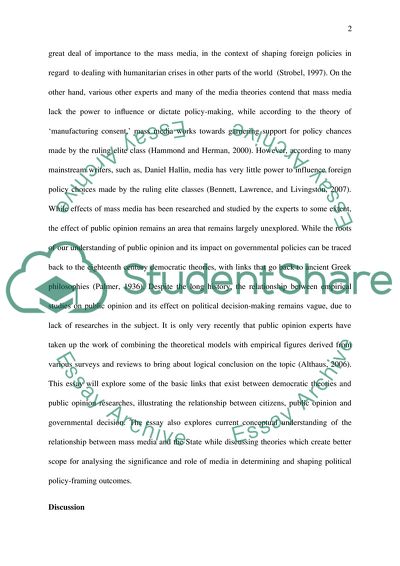Cite this document
(Influence of Media and Public Opinion on Global Politics Essay Example | Topics and Well Written Essays - 2500 words, n.d.)
Influence of Media and Public Opinion on Global Politics Essay Example | Topics and Well Written Essays - 2500 words. https://studentshare.org/journalism-communication/1822662-media-state-relationships-and-global-politics
Influence of Media and Public Opinion on Global Politics Essay Example | Topics and Well Written Essays - 2500 words. https://studentshare.org/journalism-communication/1822662-media-state-relationships-and-global-politics
(Influence of Media and Public Opinion on Global Politics Essay Example | Topics and Well Written Essays - 2500 Words)
Influence of Media and Public Opinion on Global Politics Essay Example | Topics and Well Written Essays - 2500 Words. https://studentshare.org/journalism-communication/1822662-media-state-relationships-and-global-politics.
Influence of Media and Public Opinion on Global Politics Essay Example | Topics and Well Written Essays - 2500 Words. https://studentshare.org/journalism-communication/1822662-media-state-relationships-and-global-politics.
“Influence of Media and Public Opinion on Global Politics Essay Example | Topics and Well Written Essays - 2500 Words”. https://studentshare.org/journalism-communication/1822662-media-state-relationships-and-global-politics.


